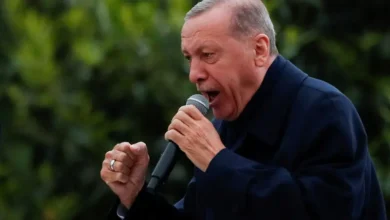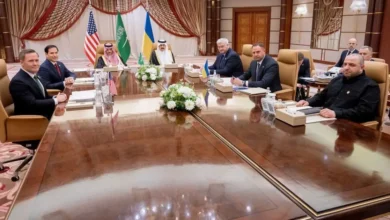‘Step towards justice’: US indicts ex-military officials for Syria abuses

Rights monitors in the United States have hailed the US Department of Justice’s indictment of two military officials accused of overseeing torture and abuse as part of the toppled regime of former Syrian President Bashar al-Assad.
The indictment, unsealed on Monday just a day after opposition groups entered Damascus and overthrew al-Assad, accuses former Syrian Air Force Intelligence officers Jamil Hassan, 72, and Abdul Salam Mahmoud, 65, of “cruel and inhuman treatment on detainees under their control, including US citizens” at the detention centre at the Mezzeh Military Airport in Damascus.
The notorious facility was one of many across Syria that rights groups say housed the victims of al-Assad’s crackdown on dissent amid the country’s 13-year civil war. It appears to be the first time the US has sought to hold individuals who took part in al-Assad’s sprawling military and intelligence apparatus accountable through the court system.
The indictment did not name the US citizens in question, but the Syrian Emergency Task Force (SETF), a Washington, DC-based organisation that helped to collect witnesses’ testimony in the case, said 26-year-old aid worker Layla Shweikani was among Hassan and Mahmoud’s victims.
Shweikani died while in Syrian government custody in 2016, with the US confirming her death two years later. Still, advocates have long decried government inaction amid calls for justice.
SETF had provided witness testimony to prosecutors that Shweikani had been tortured while at the Mezzeh Military Airport before being transferred to the Sednaya military prison. Rights monitors say that is where she was executed following a reportedly seconds-long military trial.
Among the witnesses who testified to the US government was Dina Kash, the aunt SETF’s Executive Director Mouaz Moustafa.
Kash “played a pivotal role in getting these indictments to happen because she was tortured by the same criminals as [Layla] was,” the group said in a statement. “When we catch these criminals, Dina will be a powerful witness among other brave Syrians testifying in an American court about the killing of innocent civilians by the Assad regime thugs.”
The American Coalition for Syria also called the indictment a “landmark step towards accountability”.According to a statement from OpenAI which accompanied the release on December 9, Sora Turbo is an improvement on the original Sora program as it allows for faster video creation, higher quality videos and a host of video editing features which enable users to clip and create video sequences, and to change elements in a video while preserving other parts of the video.
How does Sora Turbo work?
The power of Sora, and many other AI video generators, is its ability to replicate what humans can do with high-quality film equipment but in an extremely short time.
Users can give the program prompts not just on what to include in the video, but also on which type of camera they want to use, lens selection, lighting setup, visual aesthetics, composition and storyboarding.
An example prompt using some of these details could be as follows:
“Use a medium-telephoto lens (85mm) to capture an intimate portrait of a street vendor working at night. Illuminate the scene with a mix of the vendor’s own warm, glowing stall lights and cooler ambient city lights in the background. Focus on the details of the vendor’s hands as they prepare food or goods, balancing the frame with their expressive face. The image should evoke the hard work and pride in their craft.”
How good is Sora Turbo?
It is not perfect.
Users write a text prompt about what type of video they would like to generate and Sora creates the video. There are limitations in the current release. Video quality is up to 1080p at 30 frames per second and can only be 20 seconds long.
This is an example of a Sora Turbo video from Emi Kusana, a multimedia artist and the lead singer of Satellite Young, a music group inspired by 1980s J-pop and sci-fi themes, using themes from Takenoko-zoku, a fashion group from the 1980s. Although there is a 20-second limit, the Sora Storyboard feature allows users to string multiple AI-generated videos together and arrange them sequentially, as shown in the video below.










